




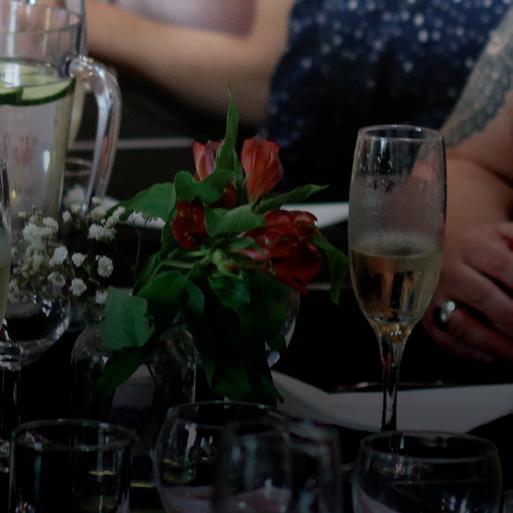















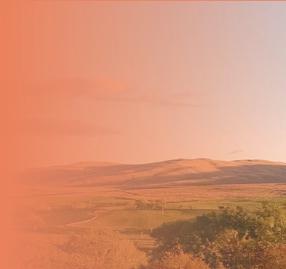
Every fire begins with a spark: a moment of inspiration, a bold idea or a quiet determination.


In this section, we celebrate the journeys of our alumnae who have turned early passions into lasting impact. From first steps at St George’s to remarkable achievements beyond school walls, their stories remind us that even the smallest spark can ignite a powerful flame.

Welcome to this year’s edition of the Dragon, in which we are proud to be celebrating our alumnae and the mark they are making on the world.
This year has been an exciting and significant one at St. George’s, with a huge amount happening in many areas of school and campus life. In this edition of the Dragon, we bid farewell to our Lansdowne site with a final tour. I would like to thank those of you who were able to join us for the joyful community events held to mark the contribution of our Lansdowne site to the St George’s story and also those Lansdowne House alumnae who have so gracefully shared the stories and memories of their time in these beautiful buildings. St George’s has always adapted and thrived to the circumstances it faces and so we do so again now. The move of Middle School onto the main Ravelston campus this summer has been a huge success, and we are feeling the benefits of being a physically united community once more. No more dashing between sites to discover
what amusements Remove had invented to keep themselves busy!
Of course, this narrative of change and adaption is an important part of the St George’s history and we were delighted to celebrate the contribution of two very important St George’s people with the official opening of the ShepleyImlah Archive in its new home at the summer lunch. Those of you who have been fortunate to visit the Archive will appreciate what a treasure trove it is, and how well organised and curated by Margaret and Nigel. I am immensely grateful.
We hope you enjoy this year’s edition of the Dragon, which exemplifies all that we know is so special about having been part of the St George’ Community. Enduring friendships, a spirit of adventure and a fearless and openhearted approach to life and all the challenges it brings. It has been particularly special to shine a light on our graduating Head student team and some of their predecessors in our ‘then and now’ feature.
Please do stay in touch with the Foundation Office and the school. We are always delighted to connect with you, hear your news and maybe even ask for your help and insight with many of our role-modelling or career-based initiatives. Thank you and enjoy!
Carol Chandler-Thompson Head

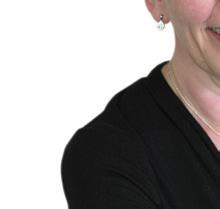


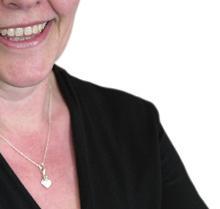


Thank you to all those who have taken the time to share their news with us. Your stories are what keep this section alive. If you have an update, accomplishment or experience you would like to share, we would love to hear from you. Please get in touch with the Foundation Office so we can continue to showcase the many ways St George’s alumnae are lighting up the world.

Charlotte Fairbairn (Class of 1980): Literary Renaissance in the Lakes Born in Scotland and educated across both the north and south of the UK, Charlotte Fairbairn has established herself as one of Cumbria’s most distinctive cultural voices. A writer with a strong sense of place and identity, Charlotte now considers herself a proud Cumbrian by adoption. She divides her time between her “small cockrobin of a house” with two rather characterfully named dogs and a houseboat on the Thames.
The dogs, we should mention, go by “the Moron of Brownness” and “Piglops.” Naturally. Only Charlotte could bestow such whimsical names with such fondness.
As Creative Director of Lowther Castle & Gardens, Charlotte has orchestrated the remarkable transformation of a forgotten ruin into one of the northwest’s top cultural destinations. Her curatorial expertise extends from designing permanent historical exhibitions to crafting the acclaimed guidebook The Story of Lowther.
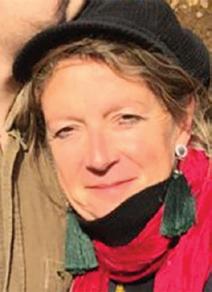













The Lake District Book Festival, alongside Christopher de Bellaigue, launching at Cartmel Racecourse in June 2026. Drawing upon childhood memories of the magic of the Edinburgh Festival, she is passionate about “bringing the world to the Lakes and the Lakes to the world.”










delightfully

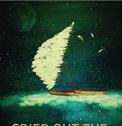

Charlotte’s literary credentials are equally impressive, though she might protest such praise. With four published novels, including her recent Cried Out the River for Love (2022), she creates what she describes as stories “fractionally out of reach.” Her writing has garnered recognition including the Northern Writers’ Award, which seems more than fractional to us.





Her career reads like a delightfully eccentric CV. Political campaigns, audiobook ventures, The Oldie magazine, and the wonderfully named “One World, One Chutney Festival” all feature. We do wonder about that chutney festival!


Perhaps her most ambitious venture lies ahead. Charlotte is co-founding
A devoted lover of birds, wildflowers, fine wine, and “all-round general irreverence,” Charlotte continues to champion great literature whilst bringing her particular brand of charming chaos to everything she touches. We suspect the Lakes will never be quite the same again.
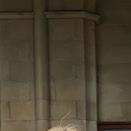
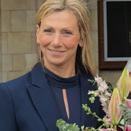


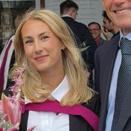
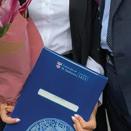



Alyssa Vallery graduated from the University of St Andrews with firstclass honours in BSc Geography. Her award-winning dissertation, “Claiming Space: Fear, Control, and Women’s Everyday Resistance in Edinburgh,” examined women’s experiences navigating public spaces and safety concerns in urban environments. The research earned her the prestigious Elspeth Graham Prize for best research dissertation, as well as recognition for outstanding use of mixed research methods.
Since graduating from St George’s in 2021, Sophie Reid has followed an unexpected yet deeply fulfilling path. She began by studying Mechanical Engineering at Durham University and, although by her second year she had come to realise that this was not the right fit, she completed the course and earned her BSc.
While at university, Sophie began sharing her fitness journey on social media, aiming to educate and encourage others to lead healthier, more active lives. What started as a personal project soon gained momentum, and after graduating she became a qualified Personal Trainer. She now is a full-time content creator across YouTube, Instagram and TikTok, posting under the handle @sophiereidfit (why not give her a follow?).
Following her undergraduate success, Alyssa is currently completing a Project Management internship with Amazon, gaining valuable experience in the corporate sector. Looking ahead, she will pursue her MSc in Energy, Society, and Sustainability at the University of Edinburgh, where she hopes to explore the dynamic intersection of environmental challenges and meaningful social change.


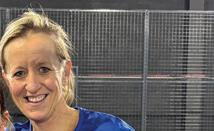





For more than a century, the role of Head Girl at St George’s has been entrusted to pupils who lead with integrity, respect, courage and kindness, embodying the very principles that define the school community through spirit, compassion and dedication.
Each has brought her own perspective and personality to the role, yet all share in the experience of representing their peers, supporting the community, and carrying forward the ethos of St George’s into life beyond school.
In this special feature, we hear from Head Girls both past and present. From recent leavers navigating today’s unique challenges alongside leadership roles, to those who held the position during what would have been very different times. In their own words, they share the defining moments that shaped them, the valuable lessons they learnt, and the lasting friendships forged along the way.
Today’s senior leaders juggle the demands of academic ambition alongside the responsibility of representing their peers, all within a school community that is dynamic, supportive and rich with opportunity.
Verity Shand (Head Girl, 2024 - 2025)
give across platforms. Yet for her, the most





Sophie’s transformation and content have reached an astounding 100+ million views across platforms. Yet for her, the most meaningful part is connecting with followers who say she has helped them build better habits, try something new, or even reconnect with their faith.












Joanna Cowie (née Loudon) and Harriet Balloch (née Inglis), both Class of 1997, proudly represented Scotland in the over-40s category at the inaugural UK Padel Tennis Four Nations Championship, held in Leeds in March 2025. The event showcased just how popular padel has become, with a weekend full of impressive talent and competition.



Today, she works with leading fitness brands such as Gymshark, Protein Works and NutriBullet, and coaches clients online to help them reach their goals. It has been an extraordinary journey so far, and Sophie believes she is only just getting started. Her mission is to inspire others to step outside their comfort zones and embrace positive change - because, in her own words, “the small choices we make each day truly add up”.








Joanna and Harriet put in a strong performance, winning two of their three matches with victories over Wales and Ireland, before being narrowly defeated by the overall champions, England. Their sporting partnership began at St George’s, where they played tennis together, and it is clearly still going strong today. Also representing Scotland was Desni McIntosh (Class of 1990), who competed in her own age group. It is wonderful to see Old Girls continuing to make their mark in sport.
Confident, articulate and deeply connected to the school she has called home since Nursery, Verity Shand reflects on her journey at St George’s that spans more than fifteen years. From memorable trips to Berlin to her ambitions for law school, she reflects on the experiences that have shaped her and the lessons she will carry forward into the future.
What inspired you to apply for the role of Head Girl?
It was never about the badge or the title for me. I’ve been at St George’s since Nursery, so this school is part of who I am. I wanted to give something back to the community
that’s shaped me. When the opportunity came up, it felt like the perfect way to represent my peers and make a difference in my final year.
When did your St George’s journey begin?
I joined the Nursery in 2009, so I’ll be receiving my Platinum badge when I leave in June – a lovely fullcircle moment.
joining the Big 4 on Q&A panels, and meeting weekly with the Head and Mrs Bryce. Some meetings are formal, others are honest conversations about how people are really doing. cont…

What does being Head Girl involve on a day-to-day basis?

It’s about being the voice of the pupil body. I listen to what the girls are thinking and feeling, and take that to the staff so we can celebrate what’s working and improve what isn’t. It also means giving tours to prospective families,






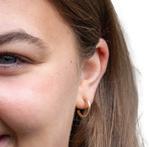




Which subjects have you enjoyed most?
History has my heart, especially our Russia course and the Berlin trip which brought everything to life. I also loved Biology and Chemistry; they’re fascinating, even if they make me work hard. Strangely enough, I found Advanced Higher Chemistry easier than Higher because I already had a solid foundation.
Who has influenced you most at school?
The entire PE department, and Mrs Aitken in particular. She has known me since Nursery and always encouraged me to try new things. Because of her, I’m leaving St George’s ready to say yes to new opportunities.
Anna McKenzie (Head of Boarding, 2024 - 2025)
Warm, approachable and full of perspective, Anna McKenzie joined St George’s in 2021 and became Head of Boarding in her final year. From the camaraderie of the boarding house to the challenges of leadership, she reflects on how the experience shaped her confidence and prepared her for university life.
When did you join St George’s, and when did you start boarding?
I arrived in January 2021 and only started boarding in 2023, just before GCSEs. Before that I commuted from Dunfermline every day - it was a long and tiring journey. Moving into the boarding house changed everything for me.
What do you love most about boarding life?
The friendships. Living together brings you closer, not just to people in your own year, but across different age groups. We became a community - supporting each other through exams, sports matches, and all the everyday ups and downs.
Looking back, which year has been your favourite?
I would never have said this at the time, but Upper Sixth. It was full of standout moments: DofE Gold, Berlin, and becoming so close with Anna and the rest of the Big 4. What was your proudest moment at school?
Being elected Head Girl. Telling my family was emotional, even if my
It’s made me independent and vocal – my dad says I speak fluent St George’s.
Which subjects have you enjoyed most?
History and Modern Studies at Advanced Higher. They were demanding, but I love them –especially the Russia topic in History, which really hooked me.
Was there a subject that surprised you?
Yes, History! I nearly didn’t take it at GCSE because Modern Studies and Politics weren’t on offer, but I chose it and never looked back.
Which years stand out for you?
Lower 5 was a joy with less exam pressure. Lower 6 felt grown-up – you know your teachers well by then, and they treat you more like an adult. Upper 6 has been special too.
Your proudest moments?
video application was filmed the night before DofE with red cheeks and puffy eyes. Perhaps it showed the real me!
What comes next?
Law with English Law at Aberdeen University. My family has strong ties to the city, so it already feels like home. I can see myself staying in Scotland, and I’ve even thought about the Army after enjoying CCF at school.
How has St George’s shaped you?
It’s made me independent and vocal. My dad says I “speak fluent St George’s” and I’m proud of that. I’ll absolutely keep in touch – I’ve already joined the Network.
Saskia Skipworth (Deputy Head Girl, 2024 - 2025)
Cheerful, determined and with a love of all things STEM, Saskia Skipworth has been part of St George’s since she was three years old.
When did you join St George’s?
In 2010 when I was three, so I’m a Platinum Badge Holder - it’s been quite a journey!
Which subjects have you enjoyed the most?
STEM subjects. Physics and Maths are probably my favourites because they fit together so well.
Was there a subject that surprised you?
Physics. As a younger pupil I thought it was impossibly hard. With great teaching and encouragement, I learned to love it and trust myself with it.
What do you do outside school?
Hockey, lots of reading, and a weekend job at the DoubleTree Hotel helping with events and catering.
What’s next for you?
Philosophy and Politics at Glasgow University, with Aberdeen as my back-up.
What has St George’s given you?
A real work ethic and a culture where girls encourage one another. It isn’t cut-throat – it’s supportive ambition.



Becoming Head of Boarding and captaining the 2nd XI in hockey.
Most memorable trip?

Berlin for Modern Studies and History. Seeing the places we’d studied was transformative. The ski trip was also a highlight.

















A teacher who inspired you?
My Physics teacher. She saw what I could do and kept nudging me to push a little further each time.
Which year at St George’s has been your favourite?
Lower Sixth. You feel independent and settled, with more freedom but still very much part of the school.
What has been your proudest moment?
Being chosen as Deputy Head Girl by both peers and staff. It meant a lot to me.
What’s next for you?
Physics at Durham University, ideally, or St Andrews. I need three As, and if I go to Durham I’ll overlap with my sister for a year.
What has St George’s given you?
Confidence, enduring friendships –some since Nursery - and the feeling that this community is always here. Staying in touch is a given, especially as I live locally.



What have you learned from your leadership role?


Public speaking, absolutely. I am now working as part of the Front of the House Team at the Fringe, chatting to people all day - this confidence came from school.













From chalkboards and hand-written letters to emails and digital archives, the role of Head Girl has changed with the times but its core remains unchanged: leading with kindness, representing fellow pupils and helping to shape the spirit of the school. In their own words, these former Head Girls reflect on their memories, the lessons they learned and the lasting impact St George’s has had on their lives.
Alison Wood (Head Girl, 1977)
With a career in law and a lifelong affection for St George’s, Alison Wood remembers a time of formal traditions, spirited house competitions and a sense of camaraderie that has stayed with her ever since.
What first inspired you to take on the role of Head Girl?
I’d always enjoyed taking on responsibilities and being involved in school life, whether through sports, debating or music. When I was asked to be Head Girl, I saw it as a way to give back to the school that had given me so much.
When did your journey at St George’s begin?
I joined in 1964, starting in the Junior School. It was a very different world - no computers, and everything was far more formal.
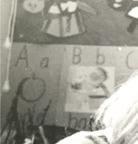
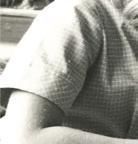




What do you remember most about your first day as Head Girl?
The staff were incredibly welcoming, and the girls were keen to learn. Compared to other schools I’d been in, the pace of work was brisk – we got through so much more in a lesson. Which teachers influenced you most?
My Maths, French and English teachers stand out - they were passionate about their subjects and genuinely cared about us as individuals.
What traditions did you love most?
Speech Day was always a highlight - every single Upper Sixth pupil was celebrated individually, which made it so personal. cont…
A memory that still makes you smile?
The staff extravaganzas – teachers dressing up and acting the fool. It brought the whole school together in laughter.
How has St George’s changed since your time?
In so many ways. Technology was in its infancy – no email, no laptops, just blackboards and chalk. Classrooms didn’t even have carpet! But the spirit of the place, the encouragement for girls to aim high, that’s been consistent.






Every single Upper Sixth pupil was celebrated individually - it made the day so personal.
Isla de Haldevang (Head Girl, 1985)
From hockey pitches to boarding house life, Isla de Haldevang’s years at St George’s were filled with friendships, fun and a strong sense of community. She reflects on the experiences that shaped her leadership and her life beyond school.
What drew you to apply for Head Girl?
I’d always loved being involved in school life - sports, music, house events. Taking on the role felt like the next step and a way to give something back to the community.
When did you start at St George’s? In 1977. I was a boarder, which gave me a close-knit group of friends and a real sense of home.


Dr Sarah Tullis (Head Girl, 1996)
With a passion for learning and a deep appreciation for the friendships she formed, Sarah Tullis remembers her time at St George’s as both challenging and rewarding.
What inspired you to become Head Girl?
I was encouraged by teachers who believed I could do it. I wanted to contribute to the life of the school and be a role model for younger pupils.
When did you join St George’s?


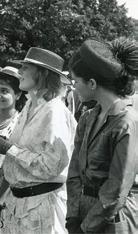
What do you remember most about your time as Head Girl?
The mix of responsibilities and funfrom helping at events to cheering on the hockey team.
Which traditions stand out for you?
The Christmas concert and the house drama competitions. They were moments when the entire school came together, regardless of year group.
How has St George’s changed?
The technology, of course. We had blackboards and chalk, not computers. But the ethos – that encouragement to push yourself – is still the same.
What did being Head Girl teach you?
To listen, to stay organised, and to remember that leadership is about serving others, not yourself.
Leadership is about serving others, not yourself.
Georgia Ashworth Davis (Head Girl, 2014)
Which subjects did you enjoy the most at school?
Biology, physics, maths, economics and geography. I loved the logic and process behind maths and sciences, as well as a fascination with how the human body works. Geography also had the most fun teachers and the best school trips.
What was your proudest moment?
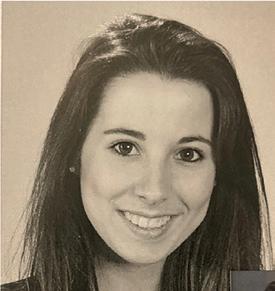

I started in the Junior School and grew up in the school’s warm and supportive environment.
What traditions did you love?
Founders’ Day and the Carol Service – both brought the whole community together in such a special way.
How has the school changed?
The facilities are much more modern now, but the sense of belonging is exactly the same.
What skills did you take from the role?
Confidence in public speaking, the ability to prioritise, and the understanding that listening is as important as speaking.
Our warmest congratulations to Sarah on becoming Head of the Abbey School in Reading –a proud achievement for one of our alumnae.



Captaining Moray in Lower School. It was the first time I stepped out of my shell. Completing Gold Duke of Edinburgh taught me more than any textbook ever could. But being elected Head Girl was my proudest moment. It was completely unexpected and heartwarming to be trusted by both teachers and peers.
I especially loved visiting the Junior and Lower School – the girls even left me notes saying they wanted to be dentists too, and I’ve kept them all.

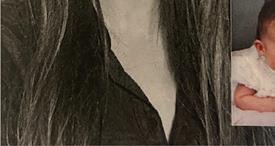

What is one unforgettable memory from your school days?
So many. Orange crispy pudding. Astroturf burns. The bus ride home from swimming with all of us in swim caps. Our High School Musical medley at lower school graduation. A monthlong exchange at Havergal College in Toronto. School ceilidhs with Merchiston. Choreographing a dance to Britney Spears in a squash court. Singing at the back of the hockey bus. And the 2014 expedition to Vietnam, working with a local community and attempting a traditional dance after two days of practice.
What were some of your interests and activities?
Hockey, lacrosse (including Lacrosse Scotland and Thistle Club), tennis, choir, St George’s Singers, Gold DofE, volunteering with the Brownies, and being a proud Moray girl.
Who stands out as a memorable teacher?
Miss Kidd and her sunny rug – the original safe space. Miss Peden for pushing me to reach my full potential in maths, even in Primary 4. Miss Judge, Mrs Aitkin and Miss Bargeton for endless coaching and tolerating our bus karaoke. Mrs Bryce for her support with exams and UCAS. And Ms McInally, who taught advanced trigonometry and the value of finding a good bench to tan on.
Beyond the classroom, what hobbies did you enjoy?
Mostly sport, choir rehearsals, and the canteen – I embraced every breaktime and snack opportunity. How did St George’s guide your career path?
I never questioned taking maths, biology and chemistry for Advanced Highers – surrounded by girls who loved science, I ignored stereotypes. Careers support steered me towards dentistry, and I always felt encouraged, from work experience to interview prep. Now I’m a dentist, mainly working with children, and have secured a training post in orthodontics at the Eastman Dental Institute in London. It turns out every day really is a school day.
I left school unafraid to push myself, to set goals, and to back myself to achieve them.
How did St George’s shape your character?
Hard work and striving for excellence were celebrated. I left unafraid to set goals and back myself, while never losing humour or humility. The silly memories – squash court dances and hockey bus singalongs – remain some of the best. I’m lucky now to work alongside former St G’s mums and colleagues who embody “strong independent women” every day.
Do you still keep in touch with your year group?
Yes – a group of 16 of us still speak regularly, and we even had a reunion trip to Spain for our 10-year anniversary. I lived with school friends after university, and I’ll be bridesmaid for Christina Ballard next year. Looking back, St George’s gave me not just a career, but friendships and confidence that will last a lifetime.


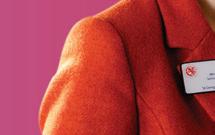


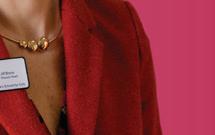
From her first matches on the hockey pitch against St George’s to decades spent sparking a love of learning in the classroom, Jill Bryce has been at the heart of school life for generations. Beloved by colleagues and pupils alike, she has witnessed the school grow and change in extraordinary ways. In this interview she looks back on her journey, her passion for mathematics, and the memories that have made her career so special. As Jill retires after more than 37 years of dedicated service, we celebrate a teacher who has left an indelible mark on St George’s.
What first inspired you to become a teacher, and what led you into the classroom as a career?
I began with a very different ambition - I wanted to be a pathologist. When medical school didn’t work out, I studied maths and statistics, but I knew I wanted a career that involved working with people. Teaching felt like the perfect combination.
Was there a teacher who had a strong influence on your life?
Several, in fact - my maths, French, and English teachers. They all shared a genuine passion for their subjects and a sincere interest in their students. That combination left a lasting impression on me.
When did your journey at St George’s begin, and what brought you here?
My first connection was actually on the hockey pitch - I played against St George’s at school (and yes, we lost). I also had friends who were pupils here. Later, I came for an interview and the rest, as they say, is history.
What stands out in your memory about your very first day at St George’s?
The warmth of the staff. Everyone was so welcoming. The students were eager to learn and we accomplished far more than I had been able to in my previous schools.
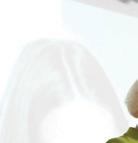
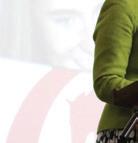



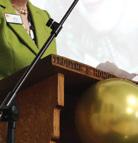

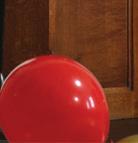


When you first started teaching, was it how you expected it to be?
Teaching at St George’s felt familiar, as it was very similar to my time at St Margaret’s, so I felt at home immediately. Teacher training in Aberdeen was quite a contrast –there I often found myself doing crowd control rather than teaching maths!
What do you most enjoy about teaching maths, and how do you inspire students to engage with the subject?
I share my own love of maths. There is no better feeling in teaching than seeing that moment when a student “gets it” – whether at National 5 or Advanced Higher level.
What experiences from your time here have stayed with you the most?
The staff extravaganzas. There’s something wonderful about seeing colleagues dress up and act utterly ridiculous together – it brings out a brilliant sense of camaraderie.
Do you have a favourite St George’s tradition?
Speech Day. I love that every Upper Sixth pupil is celebrated individually, having her moment in the spotlight.
How has the school changed during your time here?
In countless ways. When I began, technology was barely present – no emails, just blackboards and chalk, and certainly no carpet underfoot. The transformation has been extraordinary.
How important is it to you that former pupils stay connected with the school?
Hugely important. Maintaining those connections benefits both the school and the Old Girls, creating a network that supports and celebrates our community.
Can you share a time when teaching gave you a real sense of purpose or optimism?
Every time I step into a classroom. The students themselves are what make me optimistic.
What have been some of the more challenging or funnier moments in your teaching career?
Once, a student fell asleep in class. She was clearly exhausted, so I just let her rest.
Is there a particular memory that always makes you smile?
I once told a Sixth Former facing a big decision that I didn’t have a magic wand. She brought one in for me the next day and I kept it on the wall in the Sixth Form office for years.



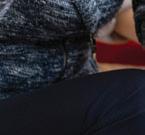







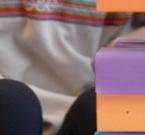
If you could go back and give your early-career self one piece of advice, what would it be?
You’re a workaholic - get to bed earlier!
How would you like your students and colleagues to remember you?
As someone who always put their needs first, whether in maths, Sixth Form, boarding, or pastoral care.
There is no better feeling in teaching than that moment when a student ‘gets it’.















Looking back, what are you most pleased to have been part of?
The transformation of the school from the 1980s to the 2020s. I’m especially proud of the move of the Sixth Form from T1-4 to its current home, because it was a student-led change.







Do you have a favourite book?
Wild Swans for the new perspective it gave me on a different era and way of living. I also enjoy anything by P. G. Wodehouse, Stephen Fry, and Hugh Laurie.
What will you miss most?
The people.
What will you not miss?
Lunch duty!
What do you enjoy outside of school?
One of the highlights of my week is singing in a choir with friends from St Margaret’s. Our conductor is the same music teacher we had at school, and we still manage to behave exactly as we did back thenin the best possible way.
Tell us something unexpected about yourself.
I don’t like cooking and would much rather go skydiving. That said, I can do just about anything with an egg!

For more than two decades, Elaine Ford was a steady and reassuring presence in the lives of St George’s students. Joining the school in 2002 as Upper School Student Welfare Manager, she became known for her warmth, her dedication and her remarkable ability to remember every pupil by name. Over her 20+ years at the school, Elaine supported generations of girls, worked alongside five Heads, and helped guide the community through times of both challenge and celebration. Now retired, she reflects with fondness on the friendships she made, the joy of whole-school occasions, and the many unforgettable moments that made her time at St George’s so rewarding.
What first brought you to St George’s, and what made you stay for more than two decades?
I worked at St George’s for twentytwo years, joining in November 2002 and retiring in December 2024. At the time I was ready for a change and looking for greater job security. I had been very happy in my role with an international firm of auctioneers, but the hours were long and demanding, and I also had growing caring responsibilities at home.
Working closely with the then Deputy Head for Student Welfare, Tricia Lancaster, and in later years with the wider guidance and administration teams, proved to be both rewarding and inspiring. Many of those colleagues became lasting friends, which is one of the main reasons I remained so happily for more than two decades.
Over your tenure, how many Heads did you work under and what stood out to you about their leadership and the ethos they shared?
Five in total. Judith McClure, followed by Helen Mackie, Anne
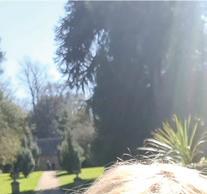


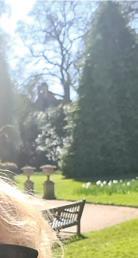
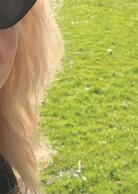
Everest, Alex Hems and Carol Chandler-Thompson. Each one a strong independent woman, each one very different in style but all embodied the spirit of the school’s ethos of championing the education of young women and girls. I loved how they all instilled a sense of self belief in the students that they could achieve their life goals, whatever path they chose as long as they worked hard and listened to the advice of their teachers!
and Social Educational sessions on safety on the internet were regular features. At times it felt the students were ahead of staff in how to navigate the online world; challenges that are still ongoing.
What traditions or moments of school life felt timeless to you?
Were there moments when you felt you had made a real difference for students or families?
Your role as Upper School Student Welfare Manager became such a constant. What did the work involve, and how did it grow over the years?
I loved my Welfare Manager role and I did also spend time helping out in the Boarding House as a day house parent once a week and sometimes at weekends. I am grateful to the school for putting me through the SVQ qualification for working in school residential settings. I also did a lot of cover for the School Nurse so all the first aid training over the years was valuable too.
Looking back, what changes did you see most clearly in the school during your time here?
The digital revolution that we have all had to navigate was, I think (apart from the pandemic) one of the pivotal moments of my time working for St George’s. When I joined, students certainly knew how to text, and then with the advent of the smartphone that opened the ‘Pandora’s box’ of social media, there were uphill challenges for us all to grapple with. Friday Personal
The annual celebrations of Speech Day and the Carol Concert at St Giles always felt timeless, bringing the whole community together in a very special way. Speech Day, in particular, was a highlight, celebrating the achievements of our Sixth Form leavers as they prepared to leave the mothership of St George’s and set out towards new horizons. Alongside these traditions, other whole-school events such as Diversity Days were truly lifeenhancing. I also treasure memories of the School Concert Band performances, when staff raided Aladdin’s for costumes to act out songs – the Abba-themed concert was a memorable afternoon, filled with joy and laughter for students and staff alike.
And on the other side, what were some of the challenges or difficult times you faced in your role?
For us all, the period during the pandemic presented new challenges, none of us knew how or when it would end; especially the impact on the students’ learning. The upside of that period was how we as a community came together to support the students and wider community. I am still in awe of colleagues Kevin Rodger and Andy Leask who pioneered the online school that was up and running from the first Monday of lockdown. We all had to learn to communicate and teach by Teams, I was kept on to help run the creche for children of our key worker parents which gave me a welcome shape to my day. Memorable days in a difficult period.
I made it a personal goal to know each Upper School student by name; this I think had a good impact. Often a student would be surprised when I addressed them by their first name, especially as I was not a teacher. Other moments would be when a parent would take time to thank me for supporting their child through a crisis. Parents too often needed a listening ear, and I was privileged to support many families over the years. What memories or stories always bring a smile?
Too many, but some of the creative excuses the students offered me for being late were hilarious. I kept a log of the best ones which I shared with colleagues when left. The funniest, I think, was: ‘I’m sorry I’m late Mrs Ford, but the dog locked us out of the car.’
Now that you have retired, how are you spending your time, and do you see yourself staying connected with St George’s?
Life seems busier than ever! One of the reasons for retiring early was to complete my Open University Honours Degree in Arts and Humanities, majoring in Creative Writing. I graduate next year, so we’ll see what comes after that. I also use my TEFL qualification to help Ukrainian refugee children with their English conversational skills, which is very rewarding. My leisure time is spent travelling, especially to Italy, and I celebrated retirement with a trip to Japan, hiking in the Kiso Valley. A keen amateur photographer, I love capturing sights from my travels, while walking and cycling keep me fit. St George’s will always be an important part of my life, and I would love to remain connected with the community that has given me so much.
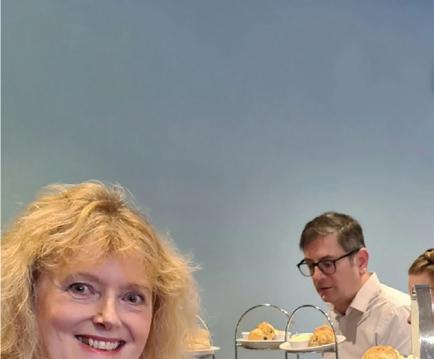






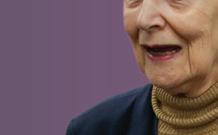






The skies may have been grey, but nothing could dampen the spirit inside St George’s as 65 Old Girls returned to their school for the annual Summer Lunch. From the moment the first guests arrived, the rooms filled with laughter, hugs and that unmistakable sense of belonging that St George’s alumnae know well.
Conversations sparked instantly, some between lifelong friends, others between faces not seen in decades, yet who picked up their stories as if no time had passed at all. The day was living proof that the St George’s bond knows no age limit, with guests ranging from 19 to an extraordinary 93. Two year groups brought particular sparkle to the occasion: fourteen members of the Class of 1965, celebrating 60 years since leaving school, and fifteen from the Class of 1985, marking their own milestone reunion.
Tours of the school stirred more memories, especially with a visit to the newly refurbished Shepley Imlah Archives. Here, photographs, artefacts and treasured memorabilia sparked lively conversations, although it was the ever popular Detention Book that drew the biggest smiles and chuckles.
Back in the dining room, a beautifully prepared lunch was enjoyed before the audience was captivated by a talk from Mrs Elizabeth Roads, former Lansdowne House student and St George’s parent. With warmth and wit, she painted vivid pictures of her school days, her stories resonating with everyone in the room.








One of the most touching moments of the afternoon came with the presentation of the Gold Badge, a tradition that honours staff who have given 15 or more years of service. This year the award was presented to three remarkable colleagues, Elaine Ford, Steven Cleary and Jill Bryce, whose dedication, kindness and passion have touched countless lives within the school community.


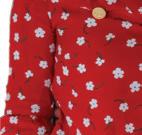

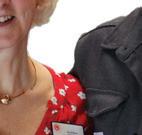

It was, above all, a day of joy, a celebration of friendship and shared history, of milestones reached and memories relived. It is evident that the enduring spirit of St George’s continues to unite alumnae across the generations.










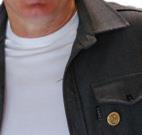
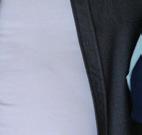


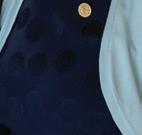











Congratulations to our Gold Badge recipients

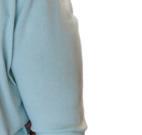








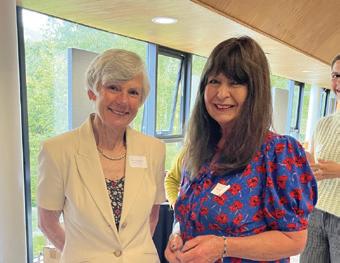

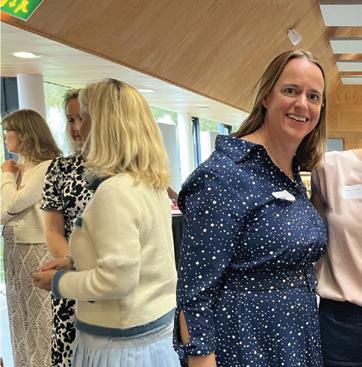
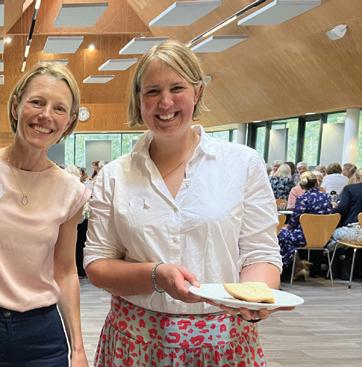







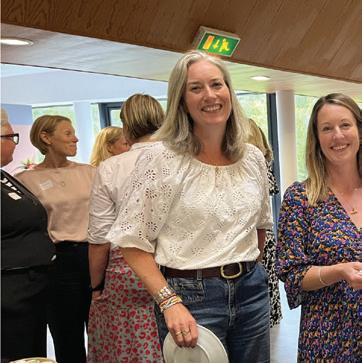

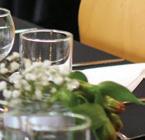



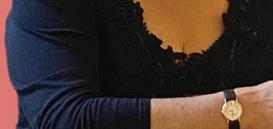

From her first days in Kindergarten with a hand-sewn shoe bag to standing on the Olympic stage, Liz Mendl (Class of 1976) has trodden a path shaped by confidence, courage and a love of sport. A pioneer in sports medicine and athlete care, she has worked at Commonwealth and Olympic Games across the world, led medical services for Glasgow 2014, and played a key role in supporting Paralympians on their journeys to success. Yet through all her achievements, she credits her time at St George’s with giving her the self-belief to thrive in any setting and the resilience to embrace every opportunity. In this interview, she reflects on the memories that shaped her, the career that took her from Edinburgh to international arenas, and the enduring influence of her school motto: Trouthe and Honour, Fredom and Curteisye.
What are your earliest memories of St George’s?
I have so many happy memories, starting right back in Kindergarten with the lovely Miss Gifford. I can still picture my peg with the little shoe bag my mum made for me. I’ve kept it all these years and it’s now my peg bag for washing. On my very first day I remember being excited, while the girl next to me was in tears. That sense of joy in being at school never really left me.
Were there moments at school that helped you grow in confidence?
One that stands out is being invited by Miss Fairless, our PE teacher, to be Games Secretary in Upper V. That meant climbing onto the Hall platform every Monday and Friday to read out the weekend fixtures and results. The first time I was terrified, but by the end of the year it felt completely natural. It taught me not just to manage nerves, but also to speak up clearly in front of others - a skill that has been invaluable throughout my career.
What are some of your happiest memories from school life?
Definitely the Games pitch. I loved lacrosse, tennis, hockey and skiing and just about anything else that was active. One Headmistress even wrote on my report that if I put the same energy into my academic work as I did my sport, I would go far. But I did enjoy subjects like biology, geography and English. Beyond sport, I loved singing in the school choir, especially performing The Messiah, and joining the Reel Club with pupils from Edinburgh Academy and Merchiston. Winning the House Play competition for Argyll and even the House Sewing Competition gave me such a sense of fun and belonging.
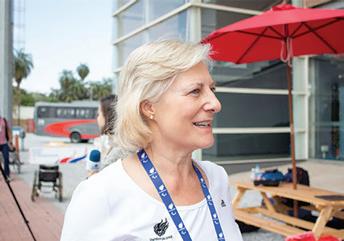
Centre I had the chance to work with athletes at training camps. Some sports, like rugby, weren’t always open to women physios at the time, but I kept looking for opportunities wherever I could.
What was your first major Games experience?
The 1986 Commonwealth Games in Edinburgh. Marching behind the Saltire in front of a home crowd was electrifying. It gave me a real appetite to continue, and I went on to work at Games in Auckland, Victoria and Kuala Lumpur.
And then came the Olympics…




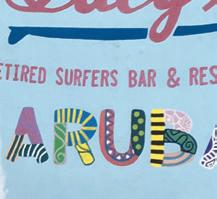


Were there particular teachers who influenced you?
Yes, I had a wonderful year studying physics with Mrs Pelham in Upper VI. I needed physics to go on and study physiotherapy, and her support gave me the confidence to pursue that path.
How did your career journey begin?
In 1976 I went to Guy’s Hospital to study physiotherapy. At the time it was a diploma rather than a degree, and St George’s weren’t too sure about it, but I loved the balance of practical skills and academic learning. Later, I returned to study for a BSc Hons in Health Studies because I wanted to move into management. What drew you towards sports medicine?
Sport had always been central to my life, and my parents encouraged me to follow that passion. When I qualified, I returned to Edinburgh and started volunteering in sport alongside my hospital work. From Meadowbank Sports Medicine
Yes, in 1988 I was appointed physiotherapist to the British Olympic Team for the Calgary Winter Olympics. It was unforgettable, not least being around characters like Eddie the Eagle and the Jamaican bobsleigh team, later made famous in Cool Runnings. I went on to work at three more Winter Olympics: Albertville, Lillehammer and Nagano.
How did your career evolve after that?
After two World Athletics Championships, I wanted to use my organisational skills more. I became Director of Sports Medicine at Crystal Palace before moving back to Scotland. In 1998 I was appointed the first Director of Athlete Services at the newly formed Scottish Institute of Sport, which was an exciting challenge and gave me the chance to shape a new approach to supporting elite athletes.
What did that lead to?
It opened the door to the Paralympic movement, which became a huge part of my life. I supported the British team ahead of Athens 2004, and it was there I met my husband, who was working in a military role. From then on, both my professional and personal life were deeply connected to the Games.
St George’s gave me the confidence to thrive in any situation, and the self-belief never to feel out of place.
Do you have special memories of London 2012, Glasgow 2014 and Rio 2016?
London was unforgettable. I was Venue Medical Manager at ExCel, and the atmosphere was extraordinary. By Glasgow 2014 I was Head of Medical Services, overseeing everything from volunteer recruitment to NHS liaison. It was a huge responsibility, but also a career highlight, knowing we had delivered something so special for Scotland.
Rio was particularly meaningful. I had been responsible for setting up the pre-Olympic preparation camp for the Paralympic team, and one of the athletes thanked me profoundly afterwards, saying that the preparation had made a real difference to them winning a medal. That moment meant the world to me.
What does life look like now?
I still keep links with sport and medicine as a Fellow of the Association of Physiotherapists in Sports Medicine. Golf is a passion, and I have been Lady Captain at both Murrayfield and Elea in Cyprus.
Yoga has also become an important part of my life, bringing balance and focus alongside the energy of sport.
My husband and I are enjoying more travel too. We divide our time between Edinburgh and Paphos, and we’re looking forward to adventures in Mexico and Sri Lanka. Organising the 50-year reunion for our 1976 leavers is also high on my list, and it feels wonderful to come full circle.
Looking back, how do you feel St George’s shaped you?
It gave me confidence. From standing on a platform as Games Secretary to sitting in meetings with world leaders and athletes, I’ve never felt out of place. Most importantly, it gave me the confidence to speak up and to know that my voice mattered.
The school motto, Trouthe and Honour, Fredom and Curteisye, still feels as relevant today as it ever did.
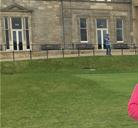





McIntosh














Desni’s journey is a perfect example of what can spark from the foundations of school life: a love of sport, a determination to overcome setbacks and a spirit that refuses to be defeated. From the pitches of St George’s to the international stage, through challenges that tested her to the limit, she found strength and purpose, carrying those same qualities into her work as a Child and Adolescent Psychiatrist.
From the moment she stepped onto the lacrosse pitch at St George’s, Desni stood out for her energy and determination. She threw herself into school sport with a competitive spirit that was both fierce and joyful, whether on the hockey field, the athletics track or the squash court where her natural talent quickly shone through. Those years not only saw her represent Scotland at both lacrosse and squash but also built the tenacity and team spirit that would shape her life far beyond school.


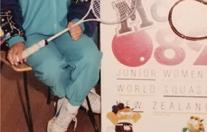



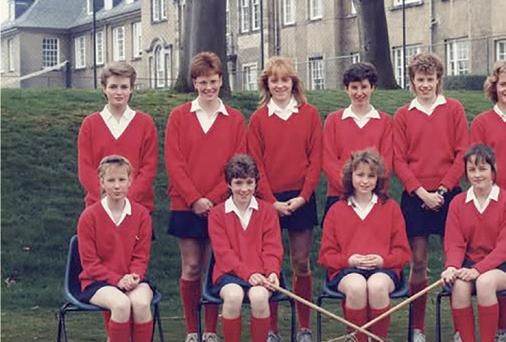

By the time she left St George’s, Desni’s ability and drive had opened two extraordinary opportunities: to pursue a career as a professional squash player and to follow her ambition to study medicine. Representing Scotland at squash, she played at an exceptionally high level, competing around the world in European Club Championships and two World Junior Squash Championships. She chose to study medicine at Aberdeen University, taking with her both the pride of representing her school and country and a deep commitment to helping others.


of being unable to do so properly. The day she walked back into her family home at Christmas was not only a triumph of recovery but also a powerful symbol of the courage and perseverance that have defined her. Unable to return to work in the A&E department, where she had first begun her medical career after her studies, she found a new calling in psychiatry. Her own journey gave her empathy and purpose in abundance. At the same time, the pull of sport never truly left her. Encouraged back onto the squash court by a friend and later discovering padel tennis, she rediscovered not only the joy of competition but also fresh arenas in which to excel. This spring she represented Scotland at the Four Nations in Leeds and she will soon step onto the court for Great Britain.
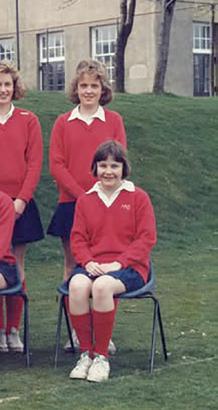
That commitment was tested in ways few could imagine when a skiing accident in Canada left her with devastating knee injuries. Years of surgery followed, with moments when doctors questioned whether she might need an amputation or whether she would ever walk again. Long nights of pain gave way to days when progress was measured in the smallest of steps. Yet Desni’s resilience never faltered. She spent several months in Indianapolis after undergoing surgery with the world’s leading knee surgeon, learning to walk again after nearly three years
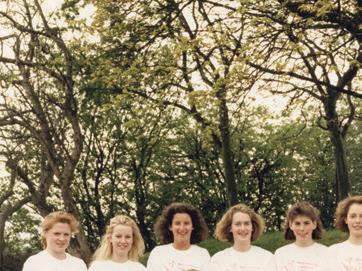

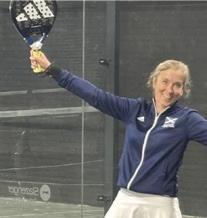
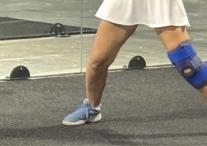
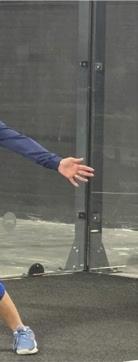
Setbacks can be faced, dreams can be reshaped and resilience can carry us further than we ever imagined.




Her sporting comeback and professional achievements are indeed remarkable, yet what shines through most is the character behind them. Desni’s story is not about medals or titles. It is about the spirit first nurtured at St George’s: the refusal to be beaten, the courage to begin again and the joy of discovering strength in unexpected


places. For today’s pupils she stands as proof that setbacks can be faced, dreams can be reshaped and resilience can carry us further than we ever imagined. With three daughters of her own, each thriving in their sports, she also shows how strength and determination can inspire the next generation to pursue their ambitions with confidence.
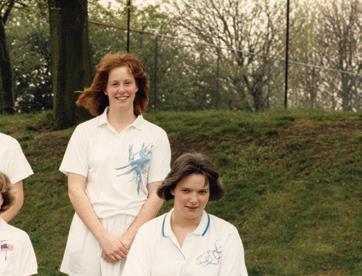


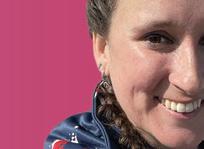

From her earliest days on the St George’s playing fields to competing as a Team GB powerlifter and working as a consultant doctor, Rachel Steedman’s journey is one of resilience, balance and ambition. A pupil from Nursery through to Sixth Form, she credits the opportunities and support she found at St George’s with giving her the confidence to pursue both her medical career and elite sport. In this interview she reflects on her school days, her proudest moments, and the determination it takes to succeed in two demanding worlds.
When were you at St George’s, and what do you remember most about those years?
I began my St George’s journey in the Nursery in 1997 and stayed until 2013, earning my Platinum Badge. Living just minutes away, the school was a central part of my life from the earliest days. What I remember most is the incredible diversity of opportunities. Sport, music, drama and trips were all on offer. With my mum teaching PE, I tried virtually every sport available. Outside sport, I played piano, sang in five choirs and took part in the 2010 cultural exchange to Madrid where I met a friend I still cherish.
Were there any teachers, lessons or moments at school that inspired your interest in science, health or sport?
The PE department was like a second home and every teacher there shaped who I became. Mrs Bryce was instrumental when I was exploring medicine. During my gap year she welcomed me back, helped me craft my personal statement and encouraged my reapplication. Mrs Hall opened doors and offered

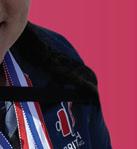
was beautiful. I would also say never give up on your goals. My path into medicine had detours but taking a year out and reapplying proved worthwhile.
How did you come to combine a demanding medical career with elite-level powerlifting?
I have learned to be open about my sport when starting at a new workplace. Supportive rota coordinators and departments have been essential. Training after shifts became my stress relief. My partner and family have been key in helping me balance it all.
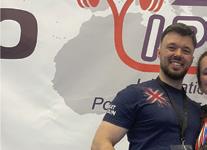
support in so many ways. The science and Spanish departments were also always ready to help outside lessons.


Did you take part in any sports at school, and did that influence your path into powerlifting or fitness?
Absolutely. I played almost every sport possible. I captained the First XII lacrosse team and was in the First XI hockey squad for years. Away from school I played golf with my mum and sister at Murrayfield and in 2018 we each won our club championships. Sport gave me the discipline and drive I now use in powerlifting.
How did your time at St George’s help build your confidence, especially in balancing academics and athletics?
The teachers were incredibly supportive during exam seasons. I sent Spanish translations to Mrs Clark who would go through them with me outside lessons. The biology, chemistry and physics departments did the same, especially during my final year when I took Intermediate 2 Physics. St George’s gave me confidence that I could aim high in both my studies and sport.
Is there a non-academic memory that has stayed with you from your school days?
The Madrid exchange in 2010 remains one of my fondest memories. It was enriching and fun and it sparked a friendship that still endures. What advice would you give your teenage self at St George’s, knowing what you know now?
If you are struggling, remember that things do improve. School is just the beginning of your story. Even though friendships changed over time, reconnecting at our ten-year reunion
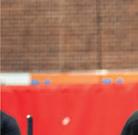

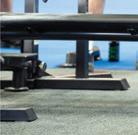

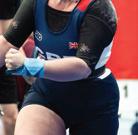



What would you say to a current student who hopes to pursue both an intense career and a passion outside of work?
It is hard work but worth it. Setbacks make you stronger and balancing both is possible with determination and planning.
Can you tell me one way your St George’s experience has made a difference for you?
It gave me confidence in public speaking and communication which has been invaluable in my medical career.
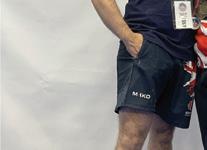



What has been your proudest moment so far, either as a doctor or an athlete?
Passing the MRCs Part B on my first attempt after five attempts at Part A was a huge personal victory. In sport, placing third in my weight category at the World Bench Championships was unforgettable. My partner, who is also my coach, was there and it is a memory I will always treasure.
What did it take mentally and physically to achieve your sporting success?
Every detail matters. I work with a sports psychologist and plan my training, sleep, nutrition and weight cuts with precision. On competition day everything needs to align.
Have there been moments that challenged your expectations or pushed you further?
One of the toughest moments came at the European Equipped Championships when I could not post a bench total. I came back with a personal best in my deadlift and that resilience carried me into the World Championships.
What drives you to keep going in both your career and competitive sport?
The satisfaction of achieving goals and the support I get from colleagues, friends and family. Sport brings balance and joy even in difficult times.
Have you had role models or mentors who made a big impact on your progress?
My dad, a doctor, and my mum, a former PE teacher, have always been my biggest influences. I am also inspired by female orthopaedic surgeons I have met who are paving the way in a male-dominated specialty.
What is next for you, professionally or in sport?
I have been selected to represent Great Britain at the European Equipped Bench Press Championships in Malta this September and I am aiming for selection for the World Championships in Romania this November.
What is the most valuable thing you feel you gained from your St George’s experience?
The wide range of academic and extracurricular opportunities that helped me try so many things and build lifelong skills.
Do you still keep in touch with any St George’s alumnae, and has that connection been important to you?
Yes, especially at reunions. Our tenyear reunion was unforgettable and I still stay in touch with a few people through social media.
St George’s gave me the confidence to aim high in both my studies and sport.



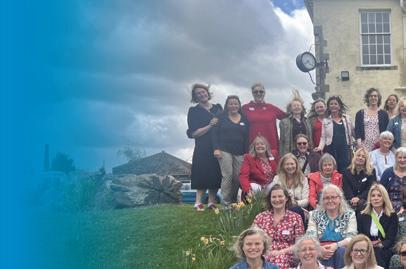

Some reunions feel like stepping back into a cherished photograph, and the Lunch to celebrate the 40th Reunion the Class of ’85 was exactly that. On 3 May, St George’s welcomed 40 Old Girls for a day filled with laughter, nostalgia and the joy of friendships that have spanned across four decades.
The celebrations began with a guided tour of the school. Each familiar corridor and classroom unlocked a memory, from mischievous moments to secrets shared and lessons learned. The stories flowed with the kind of animated detail that only old friends can bring to life, and the sound of laughter carried through the halls as they retraced their teenage years.
As one guest reflected, “It felt as though no time had passed at all, yet we were standing in the very place where our lifelong friendships began.”
After the tour, the group gathered in the St George’s Centre, where the gentle hum of conversation mingled with clinking glasses and the familiar soundtrack of the 1980s playing softly in the background. A delicious lunch was served, and the tables soon filled with conversation and bursts of laughter that rolled across the room.
Some had travelled from across the country and even from overseas, making the occasion all the more special. Their presence was a reminder of the strength of the bonds formed at school.


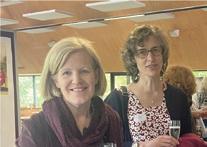
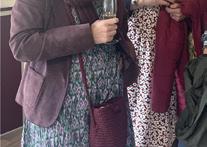

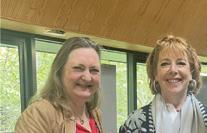




When the tune of “Voices of Change” filled Boroughmuir High School this March, two of the voices that rang out most powerfully belonged to women we are proud to call our own. Dr Clara Doran (Class of 1997) and Professor Ione Fine (Class of 1989), both St George’s alumnae, stepped onto the TEDx stage with ideas that captured the very qualities we hope our girls will carry into the world: courage, curiosity and the confidence to ask life’s biggest questions.

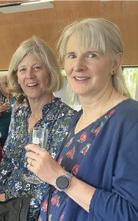






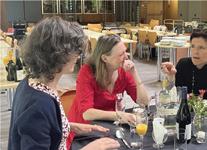

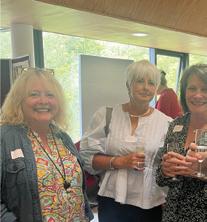


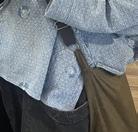
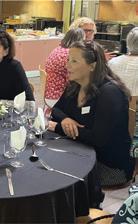

Dr Clara Doran spoke on “Thinking your way through Life’s Plot Twists”, weaving together her story as both doctor and patient. After graduating from Newcastle University in 2002, she devoted two decades to General Practice before her own plot twist arrived in 2013 with a diagnosis of Multiple Sclerosis. Rather than allow it to define her, Clara threw herself into exploring brain health, delving into Functional and Sleep Medicine, and even founding Noggin The Brain People.

Her team is currently creating computational ‘virtual patients’ to predict how well future bionic eyes might work. It sounds like science fiction, yet Ione’s work brings that possibility tantalisingly close.
Both women embody the determined and imaginative spirit that is the hallmark of a St George’s education. And they were not the only ones to impress. Among the student speakers was a brand new alumna,
Rose Henderson, whose talk on snow leopard conservation was delivered with the passion and urgency of someone already making her mark on the world.
It was, in every sense, an afternoon of ideas worth spreading – and a reminder of the extraordinary journeys that begin here at St George’s.





Her journey has been as much about sharing knowledge as seeking it. Her candid memoir Doctor, Interrupted appeared in October 2024, followed swiftly by Heads Up earlier this year. Clara has a rare gift for transforming life’s setbacks into insights that inspire.













On a very different but equally captivating note, Professor Ione Fine invited her audience to consider: “Is a bionic eye possible?” From her base at the University of Washington, Seattle, Ione has spent her career unlocking the mysteries of perceptual learning and brain plasticity, with a particular focus on restoring sight.




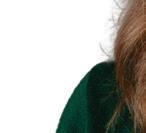




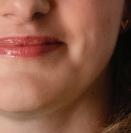




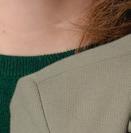
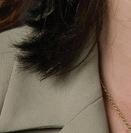





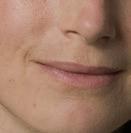



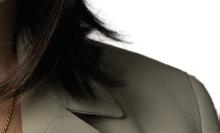










Lansdowne has always held a special place in the heart of St George’s, and its legacy was honoured in style at a farewell party filled with sunshine, song and memories that we will remember for a long time to come. Alumnae, staff, pupils and friends came together to celebrate the history of the much-loved Lower School and former boarding house, making the most of one final chance to walk its corridors before the building begins its new chapter.
The archives display quickly became a gathering point, with decades of photographs, programmes and keepsakes sparking conversations that flowed easily across the generations. Former staff, alumnae and current pupils stood side by side, laughing, reminiscing and pausing to remember. One visitor captured the mood perfectly, observing that “it felt as though the walls themselves were whispering memories from generations past.”
The Middle School Choir provided a poignant highlight, filling the afternoon air with music that stirred old memories, including the beloved school song. For many, the familiar notes carried them back to assemblies and concerts of years gone by, a reminder of shared experiences that helped shape their school days.
Around the grounds, there was a celebratory, almost festival-like atmosphere. Pupils explored the buildings one last time, even venturing into once out-of-bounds corners. The traditional games brought bursts of laughter, the silent disco kept the energy high, and the ice cream van
offered a sweet pause in the sunshine. Younger guests bounced happily on the dinosaur bouncy castle, while others browsed and purchased St George’s merchandise to take home as a keepsake.




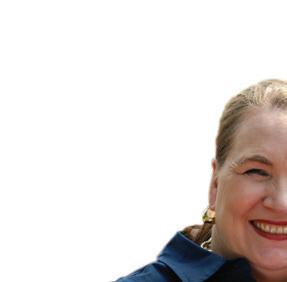





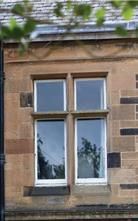
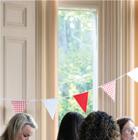

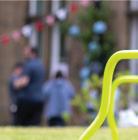
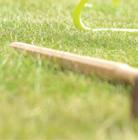







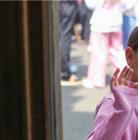
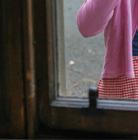
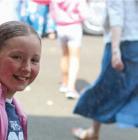
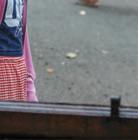

The day was more than a farewell. It was a celebration of a building that has touched generations, a chance to honour the spirit of Lansdowne and the memories it holds. Though its doors have now closed, the laughter, lessons and friendships it fostered will remain part of the St George’s story forever.
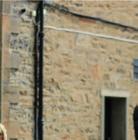
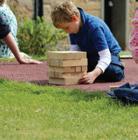


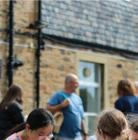

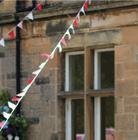
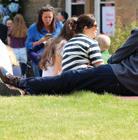






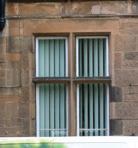

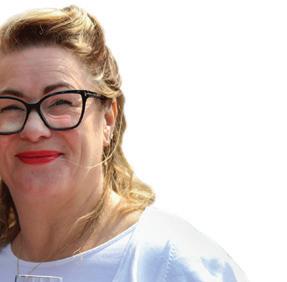

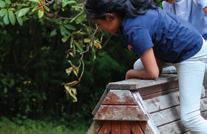
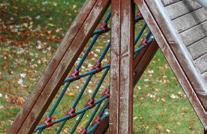


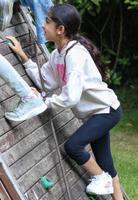

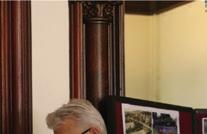
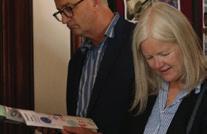
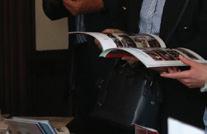



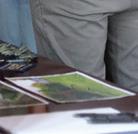
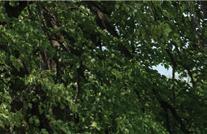
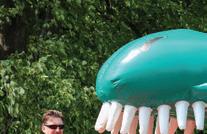


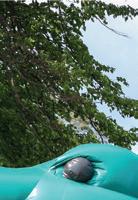


The wonderful response to our recent archives display has inspired us to take the next step with our Digital Archives Project. We want to expand the online collection and make it easier than ever for the St George’s community to explore and enjoy our history. To do this, we would love your input. What treasures from your school days would you most like to see preserved and shared? School magazines, house photographs, programmes, or something else entirely?
Your suggestions will shape the next phase of this project. Please send your ideas to foundation@stge.org.uk –we cannot wait to hear from you.



As the new school year begins, we say a fond farewell to the Lansdowne building and campus. Over the summer the final members of staff moved out. The Finance team were the last to leave, exchanging months of eerily quiet corridors for the lively clamour of pupils at breaktime.
Before the doors closed for the final time, a small auction was held to find new homes for the items that remained. From well-worn chairs to cupboards with their own secrets, every piece carried away a fragment of Lansdowne’s story. Part of the proceeds now supports a new project on campus: the low ropes course. A place for adventure, collaboration and a few inevitable

squeals of laughter, it feels a fitting echo of Lansdowne in its prime.
Lansdowne was always a building with quirks. Its patchwork of corridors, doors that opened on to surprises, and rooms that changed character over the years gave it a personality all of its own. Before we let it go completely, we took one last walk around:
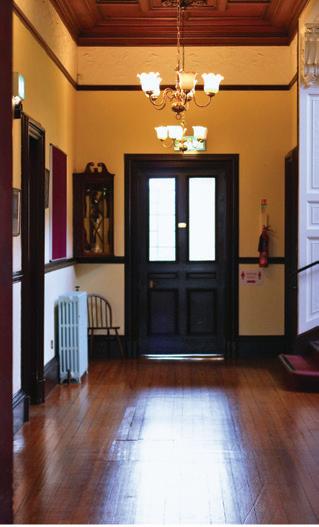

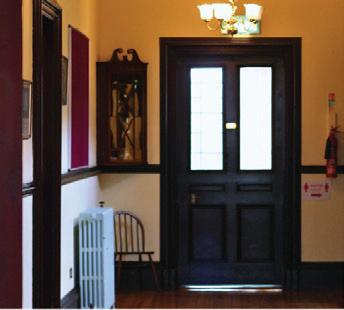
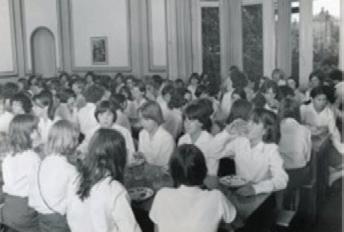
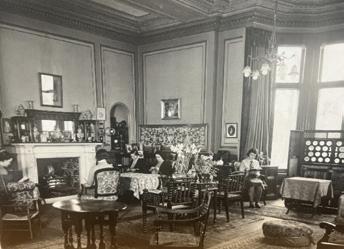



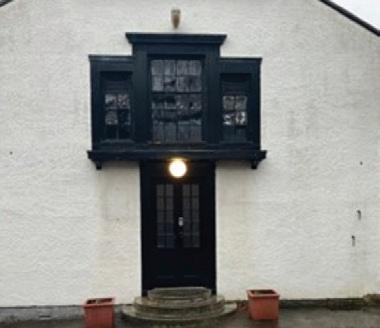
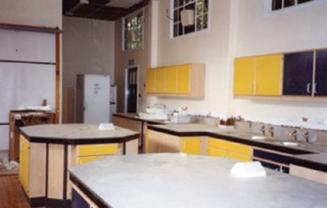
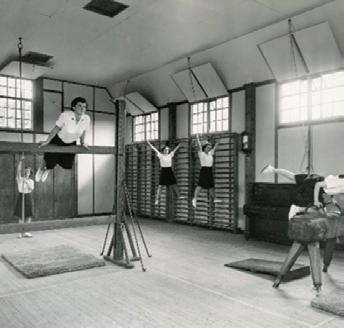

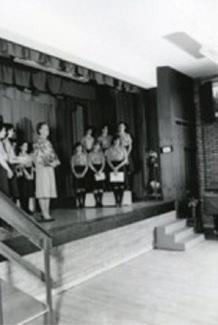
So ends our final tour of Lansdowne: a little creaky, a little chaotic, and very well loved. We will miss it dearly, yet we step forward with excitement for all that lies ahead.

In the heart of nineteenth-century Edinburgh, one young woman dared to imagine something different. At only nineteen, Sarah Elizabeth Siddons Mair transformed her family’s living room at 5 Chester Street into The Ladies’ Edinburgh Debating Society. It was 1865, and this small group of women created a space where they could “discuss public affairs without subjection to male scorn and derision.” What began as conversation soon ignited a revolution in women’s education in Scotland.
When
Sarah spoke, people listened.
Sarah was no ordinary teenager. Born into a family of performers, she carried both flair and presence. Her contemporaries described her as “an accomplished and eloquent speaker” and “the movement’s activist.” She was a leader in spirit, a voice of conviction, and a woman who demanded change.
In 1867 Sarah and her close friends Anne Dundas, Margaret Houldsworth, Jane Urquhart, and Louisa Stevenson turned words into action. Together they founded the Edinburgh Ladies’ Educational Association, determined to improve opportunities for women. Their bold vision set the foundations for St George’s Training College for Women and St George’s High School for Girls.
Historian Nigel Shepley captures the uncertainty of those first steps in Women of Independent Mind:
“The founders risked their reputations in this bold adventure. Their mood that first year alternated between anxiety at the likely prospect of humiliating failure and elation in the knowledge that success would further advance the cause of women’s higher education.”
The early years were marked by determination and growth. Classes began in St George’s Parish Church Halls, now known as West Register House, before moving to 3 Melville Street and later expanding to number 5. By 1914 the community’s ambition culminated in the opening of the Ravelston campus, where two hundred pupils walked proudly through the gates of their new school.
They risked failure, but they created a legacy.
to her dream: a place where every girl is encouraged to flourish, to find her voice, and to step forward with confidence into the wider world.
Whether you last walked through St George’s yesterday or many years ago, remember Sarah Elizabeth Siddons Mair. Her single idea grew into a movement that continues to transform lives, and it endures through every one of our alumnae.
• 1865: The Ladies’ Edinburgh Debating Society founded in Sarah’s living room
• 1867: Edinburgh Ladies’ Educational Association established
• 1914: Ravelston campus opened with two hundred pupils
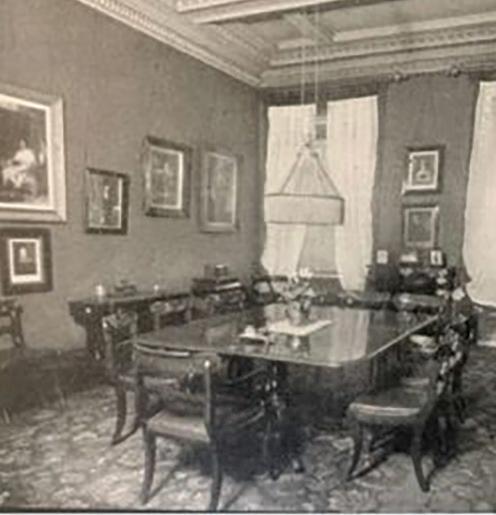
Sarah’s influence was never confined to education alone. During the First World War she joined forces with another Edinburgh pioneer, Dr Elsie Inglis, to lead the Hospitals Committee of the Scottish Women’s Hospitals for Foreign Service. Their work demonstrated the extraordinary power of women to organise, inspire, and lead on an international stage.
Today, more than one hundred and fifty years after Sarah opened her family home to debate and dialogue, her vision still shapes St George’s. The school remains true

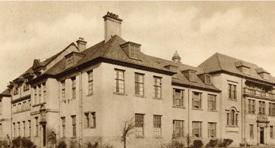
• WWI: Partnership with Dr Elsie Inglis to lead the Hospitals Committee
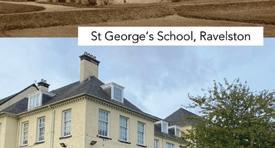


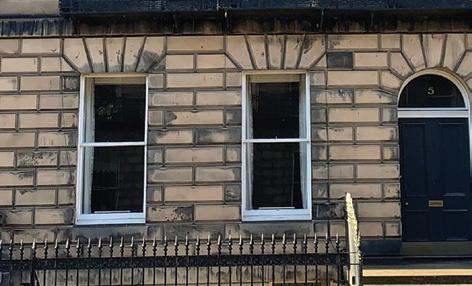





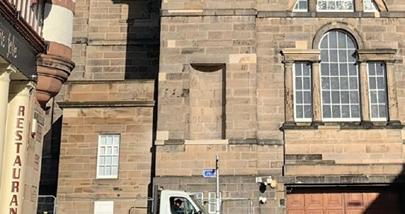



It was one of those moments that seem destined for the history book. Just before the Summer Lunch began, guests gathered in anticipation of the official opening of the newly refurbished Shepley Imlah Archives.
With ribbon-cutting scissors in hand, Nigel Shepley stepped forward. His long association with the school and his deep involvement in the Archives made him the natural choice for the honour. As Margaret Imlah smiled, “It was rather like he had never actually left St G’s – he has done so much to shape the Archive.”
If Nigel has been the guiding hand of the project, then Margaret has surely been its creative heart. Over recent months she has poured time, imagination and care into curating the collection, transforming it into a space where the school’s story can be uncovered, celebrated and brought to life. From delicate artefacts to decades-old photographs, every display has been chosen to spark memory and conversation.



















When the doors finally opened for guided tours, the reaction was immediate. Visitors lingered over the exhibits, tracing uniform styles through the decades, pausing over handwritten records and recognising familiar faces in fading photographs. One corner in particular proved irresistible: the Detention Book. Its pages prompted laughter and knowing smiles, a reminder that some aspects of school life never truly change.
Together, Nigel and Margaret have created far more than a room of artefacts. They have built a living archive, a place where the past speaks to the present and where the legacy of St George’s can be shared by generations to come. And fittingly, the story is still being written, as both are eager to see the collection continue to grow with new treasures that enrich the school’s evolving history.
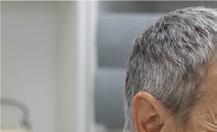

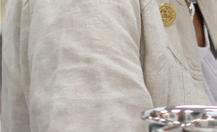

















Steven has had 37 years of service to St George’s, having started in 1988 and he was the first member of staff that our former Facilities Director, Margaret Imlah, employed.











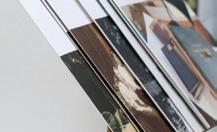

Steven’s first role in St George’s was as an evening cleaner. He proved so good and hard working that it did not take long to decide he was a suitable candidate to take on additional duties.
Steven started to help serve school lunches, whilst continuing his afternoon and evening cleaning duties and, for many years he was delegated to assist with lunch in the small dining room at the top of the wooden staircase in Upper School. Staff working in there dreaded those ‘good pudding’ days; they had been told not to give extras but knew that would not stop the students from pleading for more, but Steven dealt with it with good humour and a firm no!

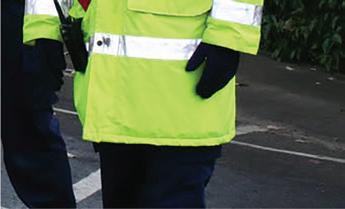
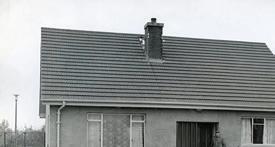


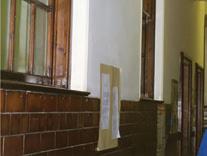
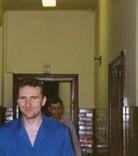
Steven was willing to turn his hand to any task and was always ready to learn new things and accept new challenges; he doubled as Santa Claus on so many occasions that he invested in his own Santa Outfit.
When the School Janitor, Bobby Falconer, retired, Steven applied for the position and proved to be an excellent choice, helping to keep the school buildings secure and managing the cleaning staff.
Schools have ever-changing needs, and we have lost count of the number of times Steven helped with room changes, furniture moves and decorating – not to mention the complete clearing of buildings.
He has helped with crossings responsibility, bus duties, traffic direction, gardening, and countless other tasks. For some years we had a marquee for Speech Day; a thousand chairs would be delivered the day before and Steven was there arranging them into endless rows. One year the G8 Summit was in Edinburgh and Dr McClure was concerned about security of the equipment in the marquee so Steven, his daughter Emma, Lee Hurst, and Thomas Vasvary stayed there overnight to keep it safe.
There were many times over the years when he was alongside Margaret, on the bar at balls and parties and made a wonderful duo.
Steven was always there when help was needed. He was a nominated key holder and when random security alarms went off and the police needed to investigate, or the fire alarm was triggered by spiders and the fire brigade turned up to check if it was a false alarm, Steven and Margaret often convened in the middle of the night to provide access.
He was also a huge support with the lettings programme, in being so welcoming and in keeping good relationships between hirers and the school.
Steven and Elaine’s younger daughter, Emma, attended St George’s for her final years of school and they were delighted to see Emma’s confidence grow and she made some very good friends during her time here.
Thank you Steven for being such an incredibly positive member of the team through all your years of service to the school. We are so very grateful to you for your very long service to St George’s. Steven decided that the spring was the time to step back and spend more time with his family and we wish him good luck and much happiness. Thank you, Steven, and we all wish you the best for the future.
Poetry offers a window into the heart. We are delighted to share these verses written by our very own Foundation Office Alumnae Relations Manager, Mairi Macnaughton.
How things have changed in the playground today
As in years gone by, we had few rules to obey.
British bulldog now banned, was such fun back then especially when the team had a well thought out plan.
Easier was the skipping, well that’s what we thought but trying to keep to the rhythm was not.
Elastic bands tied tightly together made French skipping, which I think was so much better.
Conker competitions at a certain time of year
Sometime brought on many a tear.
Sturdy leather satchels which held our books
seems to have turned into the Longchamp look
Pretty pink rubbers with the blue end for ink replaced by Tipp-Ex so the sentence can link
The wee box of words and ‘Janet & John’ … I wonder if ’Biff & Chip’ will last as long!
The solid wooden box that sat in the gym is now a smooth padded table which you can’t sneak in.
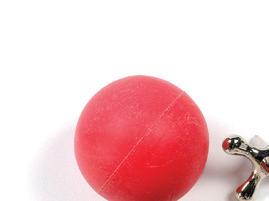
If hit hard and the target was missed
The pain would certainly shoot up the wrist.
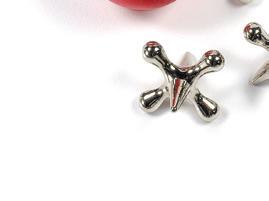
Out on the field ‘ Kick the Can’ was in place
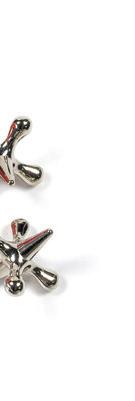
And it looked like kids were running a race
Clackers was a great game and really quite tricky
It involved focus and timing and moving the hand very quickly.
Jacks was a favourite but intensely competitive
And often caused folk to become very argumentative.

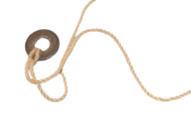
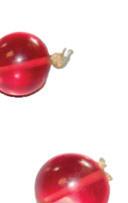

The old rolling blackboards are a thing of the past.
Interactive white boards great and fast.
No need for mess when rubbing stuff out.
A touch on the screen and then there is nought.
Wooden Wall bars fun but splinters not, metal practical and will not rot.
Glue bottles messy and got all bunged up, sticks are easy and no need to unplug
Coloured counting rods, green for 6, now a calculator does the trick.
When the hiding place was found First back to the can had to kick it far from the ground.
Stuck in the mud still played today Involves running around keeping the catcher at bay.
Once caught you stood with legs apart hoping for someone to crawl through then depart.
Free at last so off you would run And continue to have so much fun
These are just a few playground games we played
Maybe you can suggest some that in your memory has stayed


Pencil cases practical and some made you giggle but none could ever match todays Smiggle
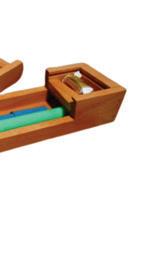
The Oxford Maths set does still remain and even has the same things within
Cora Gardiner (Class of 2012) and Cameron Okoth
A baby girl – Sienna Preeti GardinerOkoth
Born on 26/04/2025










Charlotte Gray (Class of 2009) and Jonathan Hayes
A baby girl – Hallie Betsey Hayes
Born on 02.05.25

and
A baby girl – Ruby Bern O’Keefe
Born on 17/07/2025
















Emma Birrell (Class of 2008)



















of




















Sheona Hegarty – Staff
Chemistry Teacher 1979 – 2000
Died on 3rd February 2024 aged 81





Marion MacIvor (née Somerville)
OG and Class of 1947
Died on 8th January 2025 aged 95.
Fiona McDonald Edwards – Staff
Former Head of Classics from
1984 - 2001
Died on March 27th 2025, aged 84.
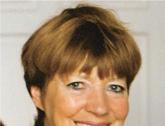

Sheona Hegarty tribute written by
Tricia Lancaster
Sheona was born in Glasgow in 1943 and attended ‘Hutchies’ School before going to St Andrews to read Chemistry where she met her husband, Terry.
Sheona was a hugely respected individual in the St George’s community, and she believed in its ethos of educating girls to become independent women. Over the years, she proved to be a gifted Chemistry teacher, able to inspire those who struggled with science in general, just as much as those who were gifted in Chemistry. She made the subject relevant and accessible, with one pupil recalling the infectious chuckle that would follow some pop, bang or fizz in the lab demonstrations - she was never sure whether they were relieved that the experiment had worked, or enthusiasm - either way, they added to the joys of learning Chemistry.
Moving into Guidance/ pastoral care, her wisdom and her humanity shone through her dealings with pupils. As Head of Sixth Form she found fulfilment. She was approachable and interested in others and their thoughts and feelings. She really cared about people, was never patronising and gave students a feeling of self-worth, helping them to make choices and take control.
Jean Campbell (née Macintyre)
OG and class of 1948
Died on 18th February 2025 aged 95.
Helen Margaret Monfries Copland (née Stewart) (Class of 1962)
Died on 1st August after a short illness, aged 80.
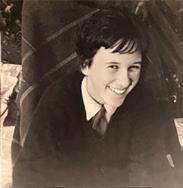
They could see in her someone who did not judge and who would take them seriously and several of them stayed in touch long after her retirement. She was pioneering in so many ways: she initiated a relevant and much enjoyed programme of General Studies, encouraging debate and the exploration of potentially sensitive topics for the 17- and 18-year-olds, opening up sex –ed and health issues, never afraid to confront reality. She was kind and great fun: from leading the school skiing trips over many years to Sixth Form leavers’ swims on the beach at Yellowcraigs, Sheona always threw herself into every activity with huge enthusiasm.
After retirement, Sheona continued to throw herself into new activities. Qualifying as a reflexologist, taking up golf and continuing to ski – this time with her grandchildren. She also retained deep friendships with many of her St George’s colleagues through annual sailing trips on the west coast and a well-loved ‘St George’s’ book group which is still ongoing to this day.
Many of her pupils also stayed in touch and remember her fondly. Over the years her two children have had ‘you might know my Mum...?’ moments, the responses to which were resoundingly endearing memories. Sheona was and remains, to use the words of her pupils, ‘ a legend’.
Gill Young – Staff
Head of Geography (for 40 years) Died February 2025.
Nancy Kerr Johnson OG (Class of 1962)
Died on 6th August 2025, aged 81.
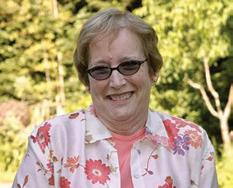
Flo Galbraith taught music at St George’s for many years.
Died on 31st August 2025 aged 92




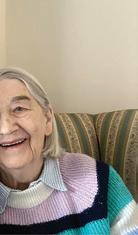

In Loving Memory of Miss Florence (Flo) Galbraith
Miss Florence Galbraith was a cherished and inspirational member of the St George’s community. She joined the staff in 1964, bringing with her a passion for music that would shape generations of pupils. She began by teaching solo singing and piano, soon expanding her influence to Primary class music and later to the Middle School, where she nurtured a strong tradition of choral singing. Her dedication and enthusiasm led to the formation of outstanding madrigal groups in the Senior School, which were regularly invited to perform at concerts both within the school and across Edinburgh, including the prestigious ‘Music at Six’ series at St Giles’ Cathedral.
In 1987, Miss Galbraith returned to her roots in individual music
teaching, now also offering clarsach lessons. Her commitment to the school extended beyond music: as an Upper Four form mistress and a member of the Health and Safety Committee, she brought her trademark efficiency and organisation to every task. Many concerts ran seamlessly thanks to her quiet diligence behind the scenes. Although she retired from full-time teaching, Miss Galbraith continued to share her musical gifts in a parttime teaching capacity for several years, remaining a valued presence in the school community.
Miss Galbraith’s legacy is one of musical excellence, tireless dedication, and a deep love for nurturing young talent. She will be fondly remembered by all who had the privilege of knowing her.
Julia Bertram (née Kay, Class of 1953)
Died on 13th May 2025 aged 89



Tribute written by daughter Susan who is also an OG.
Julia Margaret Bertram (née Kay) (Class of 1953) was born on the 21st September 1935 Her early childhood was spent in Hong Kong but the family returned to Scotland in 1939 to escape the perils of the Second World War. They settled in East Lothian where, in 1940, Julia’s sister Kathleen, fondly known at Kay (Class of 1958) was born.
Both sisters attended St George’s where Julia excelled as an academic student with a natural flair for languages and music. A competent musician, Julia often performed piano solos and duets with Kay on the violin, in the Edinburgh Musical Festival. In 1953, having left St. George’s Julia continued her French studies at the British Institute in Paris before attending Edinburgh University where she gained an MA in Politics, History, Philosophy and Languages. Julia remained a life-long St. George’s OGA
member and held positions on the Committee several times.
After graduating, Julia met and married a young racing driver who went by the name of Bim….aka David McNab Bertram. And had two children, Susan (year of 1979) born in 1962 and Colin born in 1964. Julia was very involved in the set up and running of the new family business and worked with her husband for 20 years, before retiring in 1996.
Retirement was full and fun, and their love of travel took priority with many motoring holidays around Europe and worldwide cruises. Julia was a member of Ravelston Golf Club, was also a dab hand at bridge, a crossword fiend and a huge supporter of The Scottish Ballet. David and Julia were also regular concert goers at the Usher Hall, especially during the Edinburgh Festival.


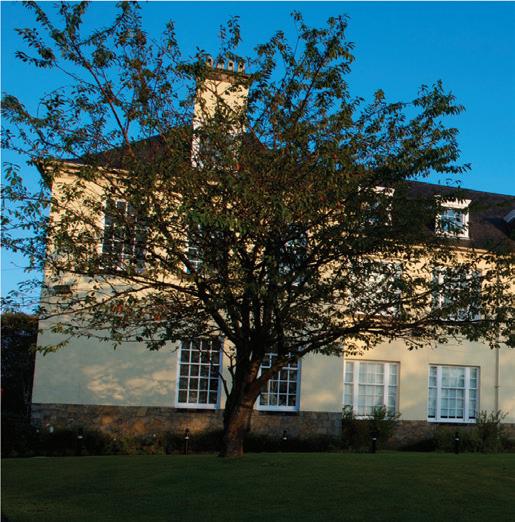



















If any alumnae, current pupils, staff or parents have news or general updates, article ideas, tributes or pictures they would like to share, then please do get in touch. We would love to hear from you!
T 0131 311 8000
E foundation@stge.org.uk
W foundation.stge.org.uk/homepage
St George’s Alumnae Group @stgealumnae
St George’s Edinburgh, alumnae networking group!
13 June 2026
ST GEORGE’S, EDINBURGH
Garscube Terrace, Murrayfield, Edinburgh, EH12 6BG
For whole school news please visit www.stge.org.uk
Registered Charity No SC012632